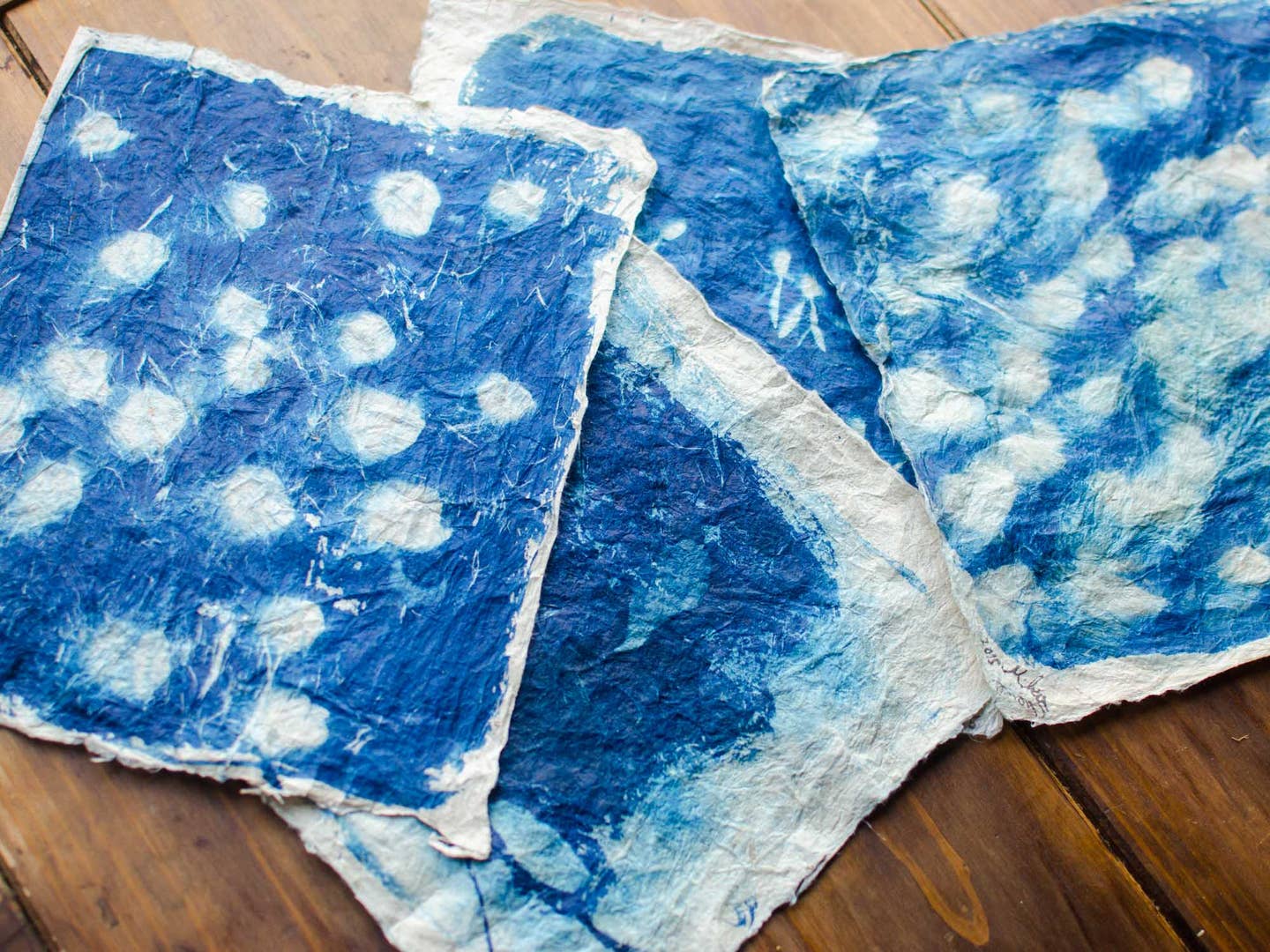
Why This Japanese Artist Spends Months Making Sheets of Painstakingly Gorgeous Paper by Hand
Mika Horie is one of the few modern practitioners of a dying craft—traditional gampi paper—and it’s not for stationary
The vintage Land Cruiser parked in front of Mika Horie's Meiji-era farmhouse and studio is famous on the internet. But for her, the oversized car is not just a fashion statement—it's a necessity. After the snow melts in spring, Horie drives up narrow winding roads into the mountains of Kaga, in Japan's Ishikawa prefecture, to fill the enormous car with gampi branches—the raw material to make traditional paper.
At 31, she practices an endangered craft that has been mostly kept by older generations. “The market for handmade paper has sharply declined, and artisans struggle to find the next generation...I wanted to discover the history and inherit the job of making all-natural papers.”
“The wild fibers make strong paper with a lustrous sheen and a warm greenish hues,” she explains. But the gampi shrub is difficult to cultivate, so most craftspeople eschew it in favor of the more agriculture-friendly Kozo (paper mulberry). Horie processes the gampi fibers by hand into delicate-looking but sturdy paper, onto which she prints cyanotype images of the landscape around her home.
Her airy studio seems to flow seamlessly into the field outside (and in winter, the chill comes right through the mud-plaster walls). Ribbons of shredded gampi hang from the eaves and tangle into piles on the floor along a bank of windows across the front of the house—a modern renovation to the rustic building. There’s an open charcoal fire pit, and jars of umeboshi—pickled plums, her favorite ingredient—ferment on a shelf. The same indigos and subdued greens of her artwork, her imposing Land Rover, and the Japanese countryside are here and there in the objects inhabiting her home and the clothes she wears. She has the air of elegance and subtlety that women from Kyoto (her home town) are known for, but with a joyful, impish smile that can’t be contained.
Kaga is the northernmost point in Japan where gampi grows. Horie moved there in 2013 to set up her studio after completing an MA in London, and apprenticing to a traditional papermaker in Shiga. “The history of wild paper trees in the region touched my heart,” she says. She relied on the help of elderly neighbors—who recalled half a century ago when harvesting gampi was an important job for 10- to 12-year-olds—to teach her where to harvest the plants. She learned to cut the shrubs just above the roots, allowing fresh shoots to grow until they can be harvested again.
Horie shreds the branches and dries them for a week or two, then peels away the bark, leaving ribbons of fuzzy off-white fibers. These she boils for about four hours to soften, then pounds the fibers into pulp using a wooden mallet on a large flat stone by the stream outside her house. When the fibers are broken short and silky, she transfers the mass of pulp to a washtub of water (that she draws from a well with and old-fashioned hand pump). A handful of fiber expands to fill the tub with a pulpy soup. She swoops a screen through this slurry and lifts it out to inspect the distribution of fibers. She might swoop again to make a thicker paper, or manipulate the bits of gampi into a more pleasing pattern. When she’s satisfied, she leaves the paper to dry overnight in the breeze.
It’s easy to see why paper production has been streamlined and industrialized. Even small-scale papermakers often use a machine to break up the fibers into pulp. Holding up a translucent rectangle of paper, she explains that she prefers the irregular fibers that can only be produced by hand-pounding. The unique personality of each sheet of paper becomes even more distinct when she prints her photos on them. Each edition has a secondary image in the texture and pattern of the fiber.
Her photographic process is nearly as laborious as the paper making. She hauls a vintage 8-by-10 camera into the hills where she harvests the gampi, capturing mountainscapes, foliage, and nearly-forgotten villages. She treats her paper with iron salts, places the oversize negatives directly on top, and allows the sun to expose them to shades of cyan and deep indigo.
Despite its geographic isolation, Kaga has a thriving creative community, and a steady stream of visitors. Horie's prints have made their way to Kentler and Deudone galleries in New York and private collections around the world. Within the constraints she's set for her creative practice—gampi paper and cyanotype—Horie experiments with technique and subject matter. In spring and summer she incorporates plants from her garden into the papers, or solar prints their silhouettes.
Last fall, she produced a postcard size series of farm tools, like the ones rusting in an outbuilding beside her house. For a friend who helps her find the best gampi, she crafted lampshades made from her paper with umeboshi pits embedded between the layers. “I don't try to make new things,” she insists, “I have been trying to discover and combine the histories of Japanese handcraft and Western photography.” And yet, by doing so she has created something original.
Hannah Kirshner is freelance food stylist and recipe writer, posting beautiful food for real life at sweetsandbitters.com and @sweetsnbitters.
More Crazy-Complicated Japanese Crafts
Keep Reading
Continue to Next Story










